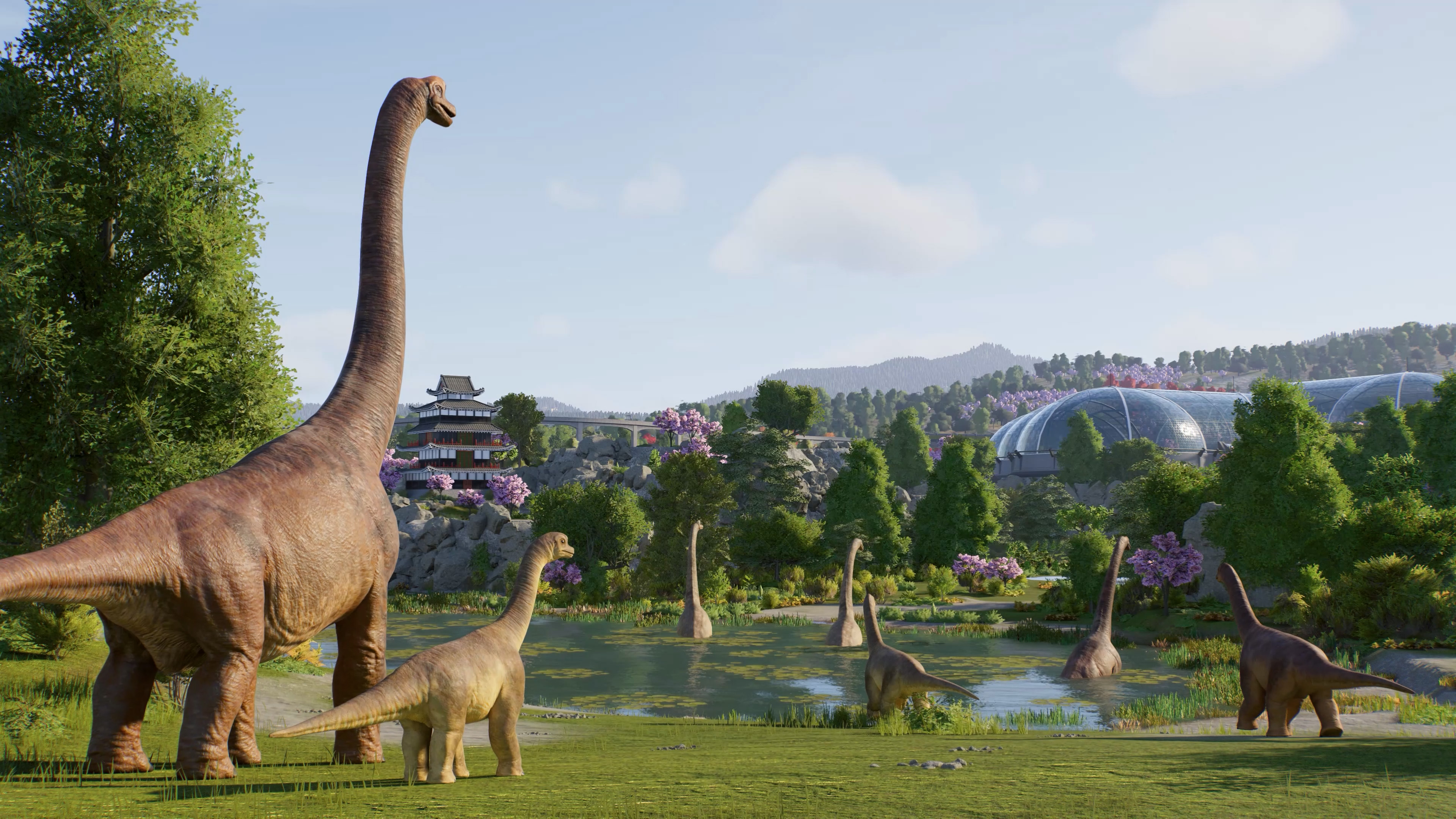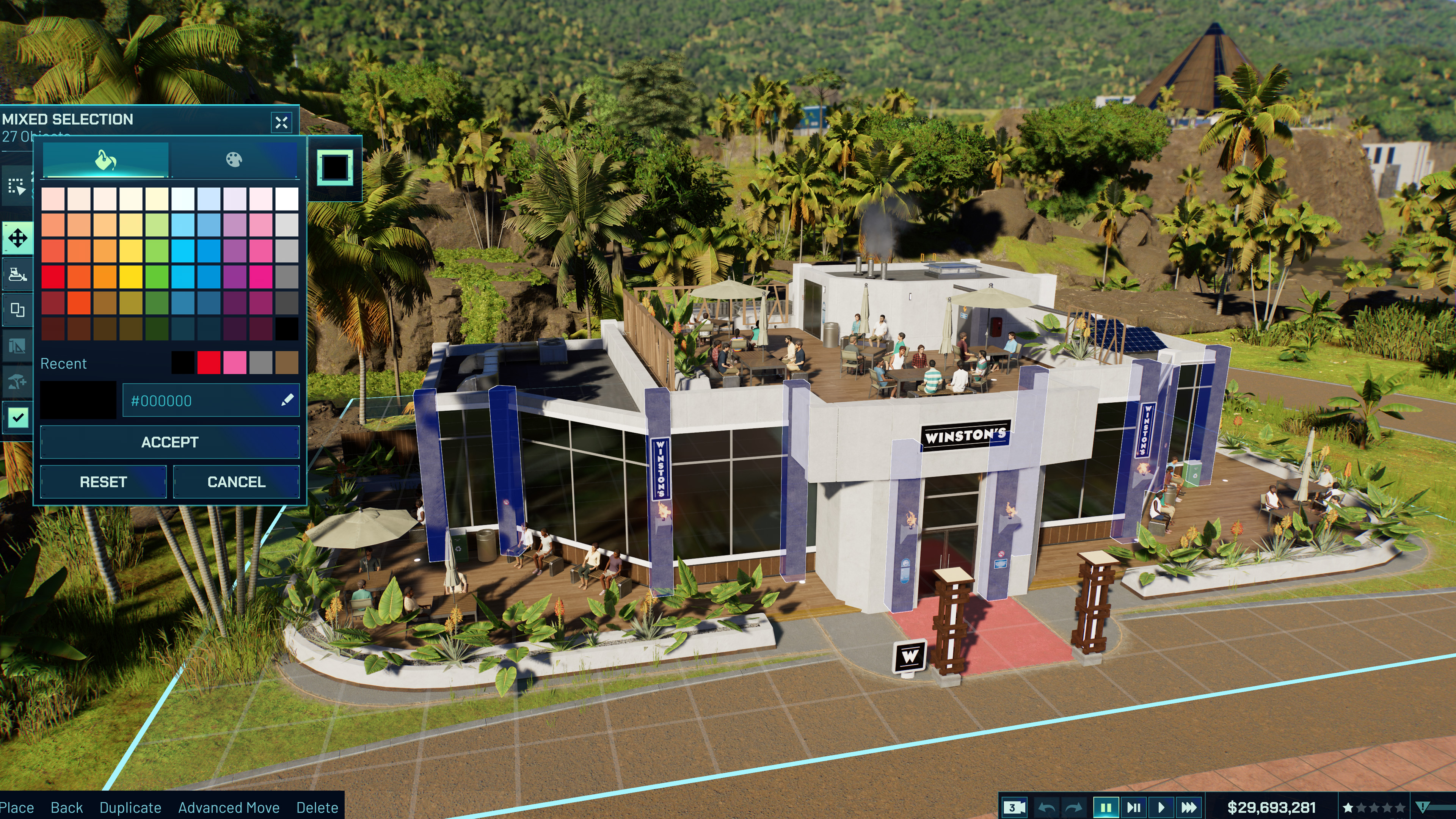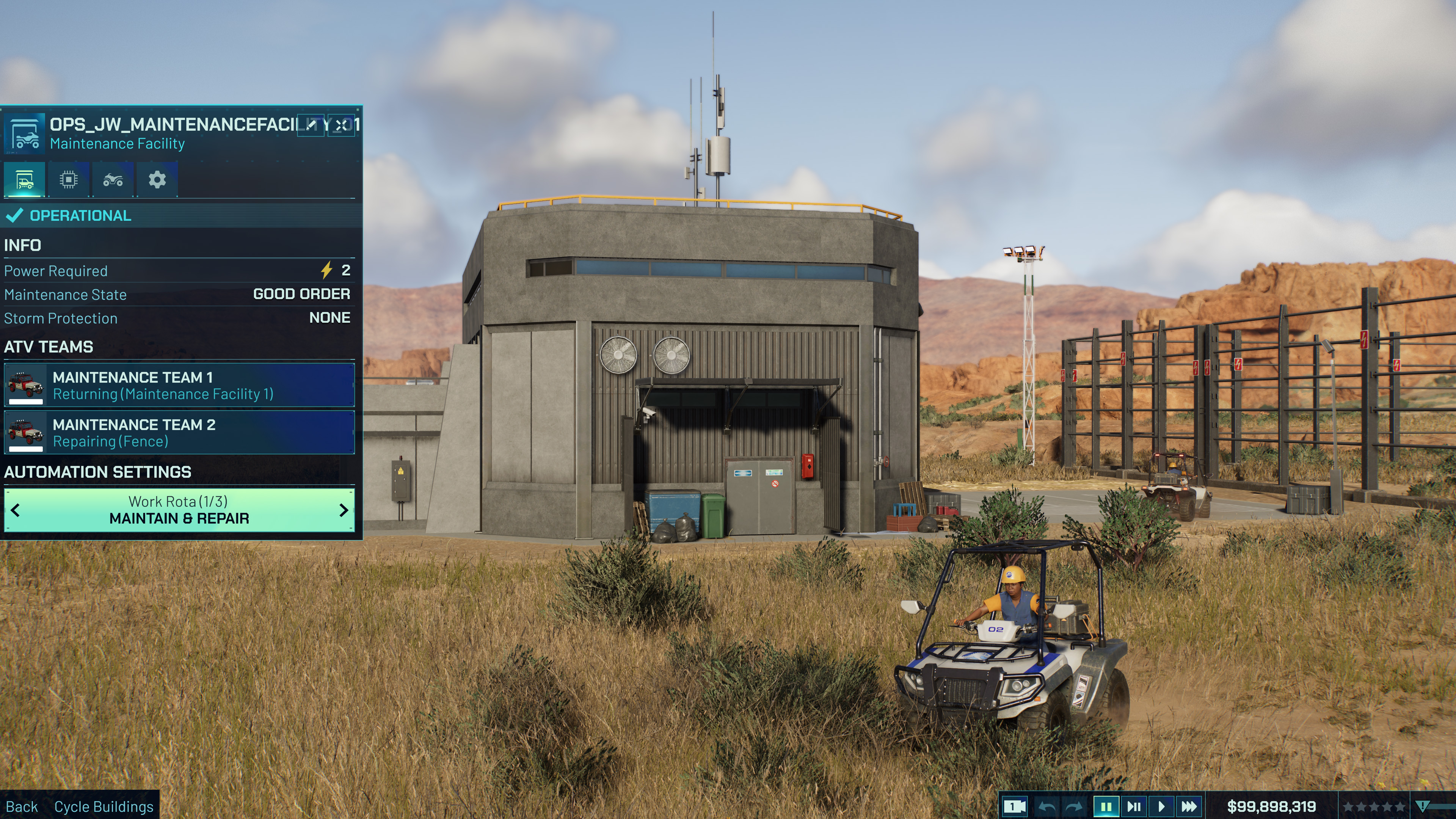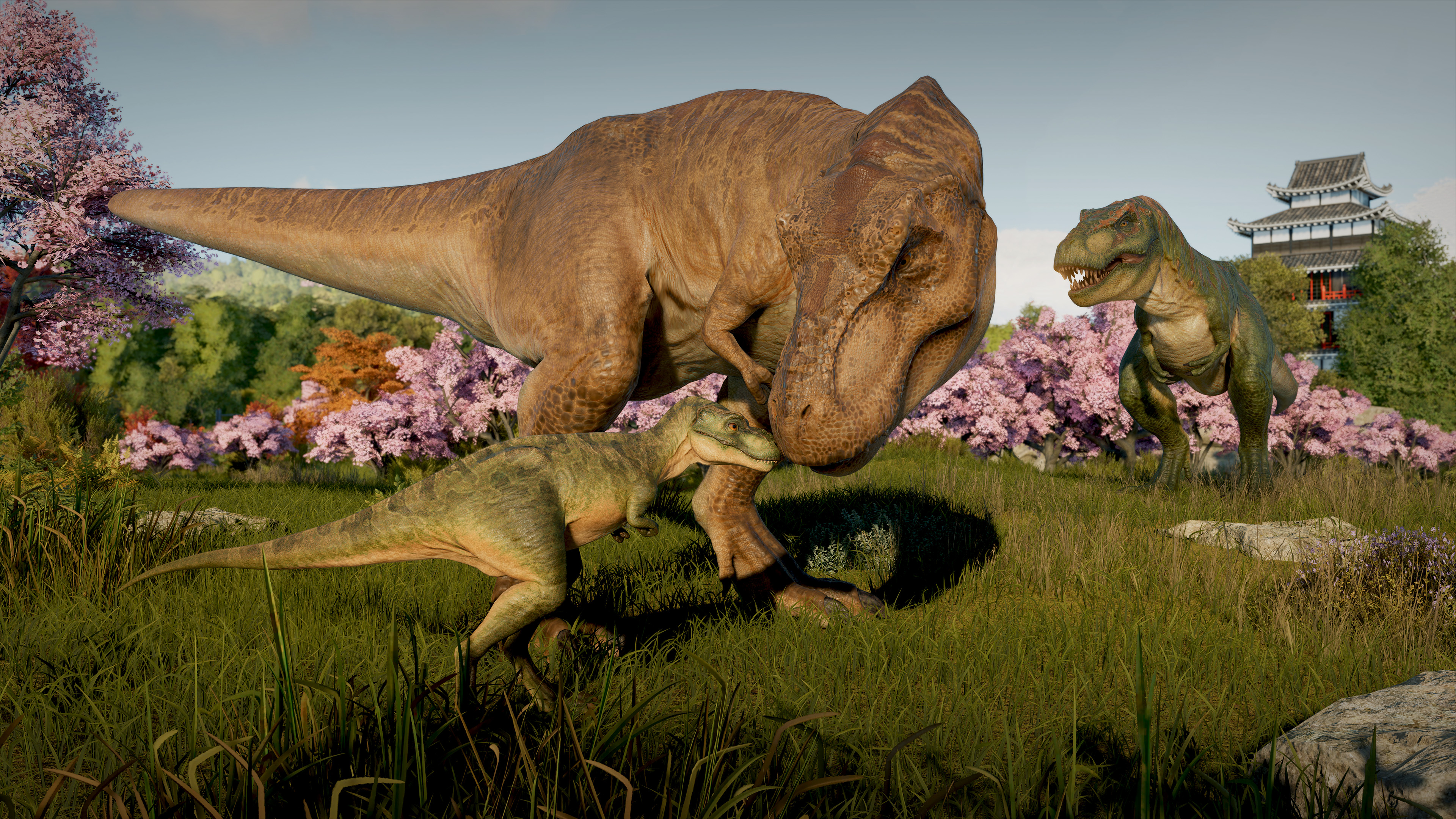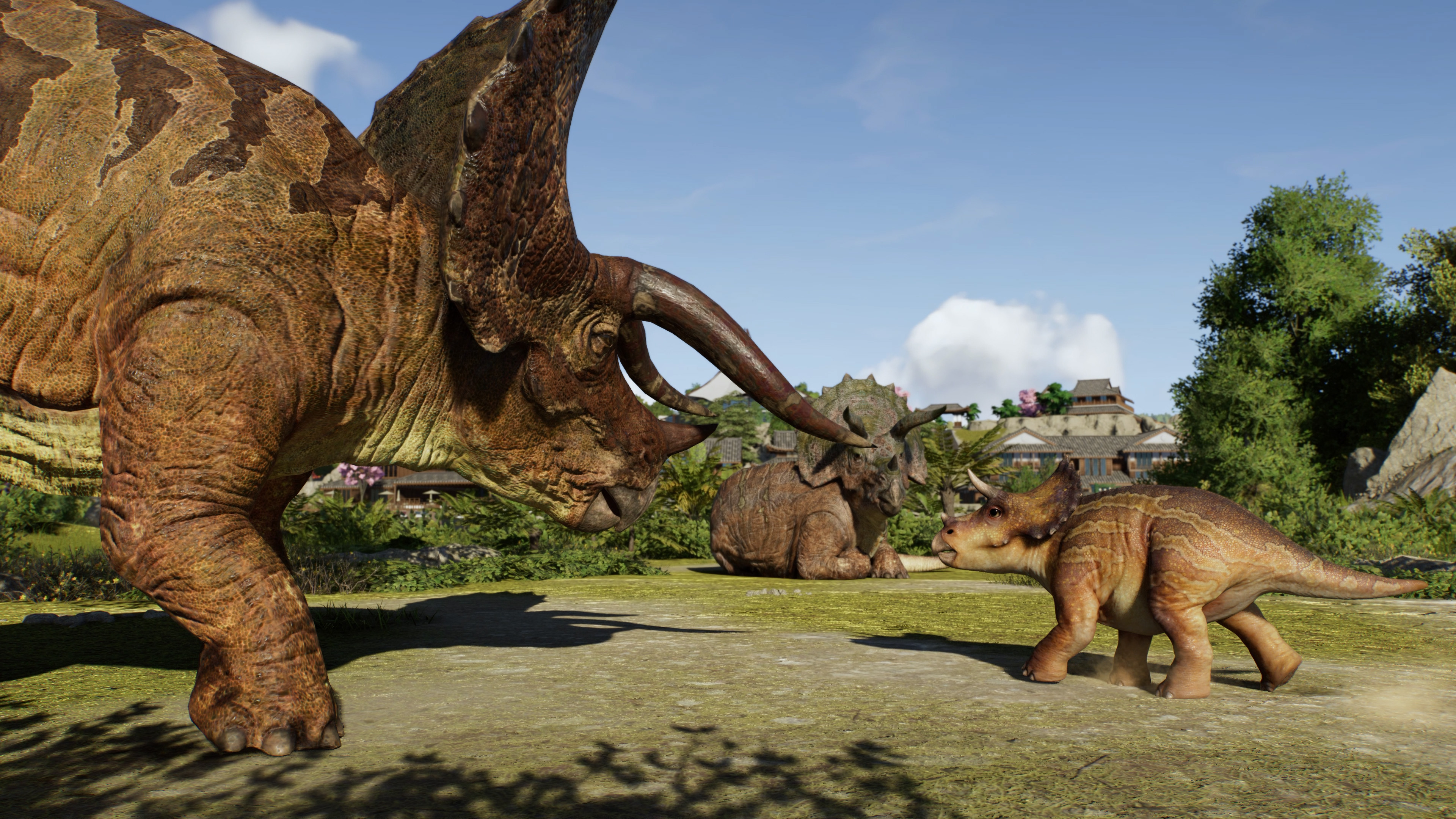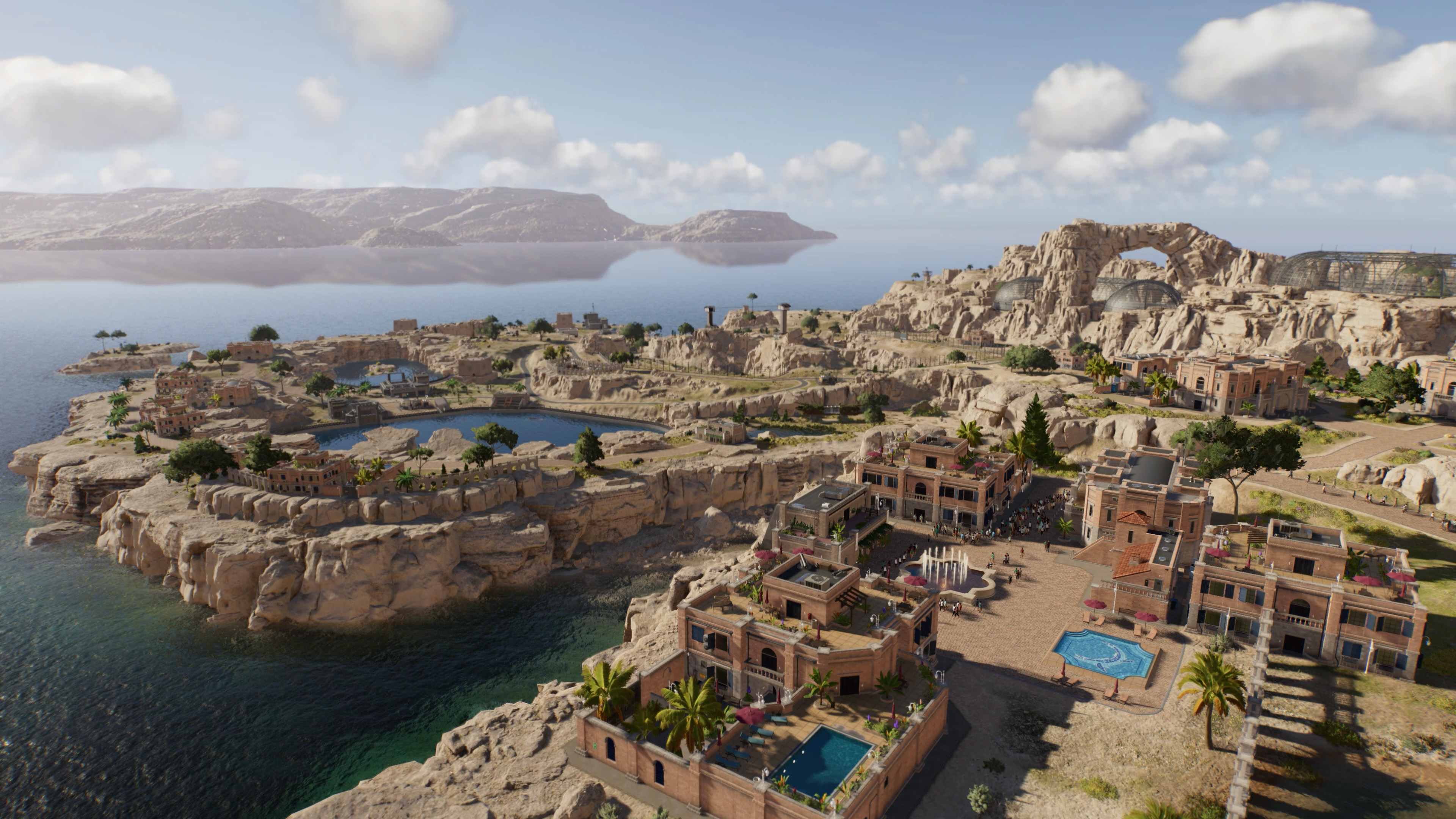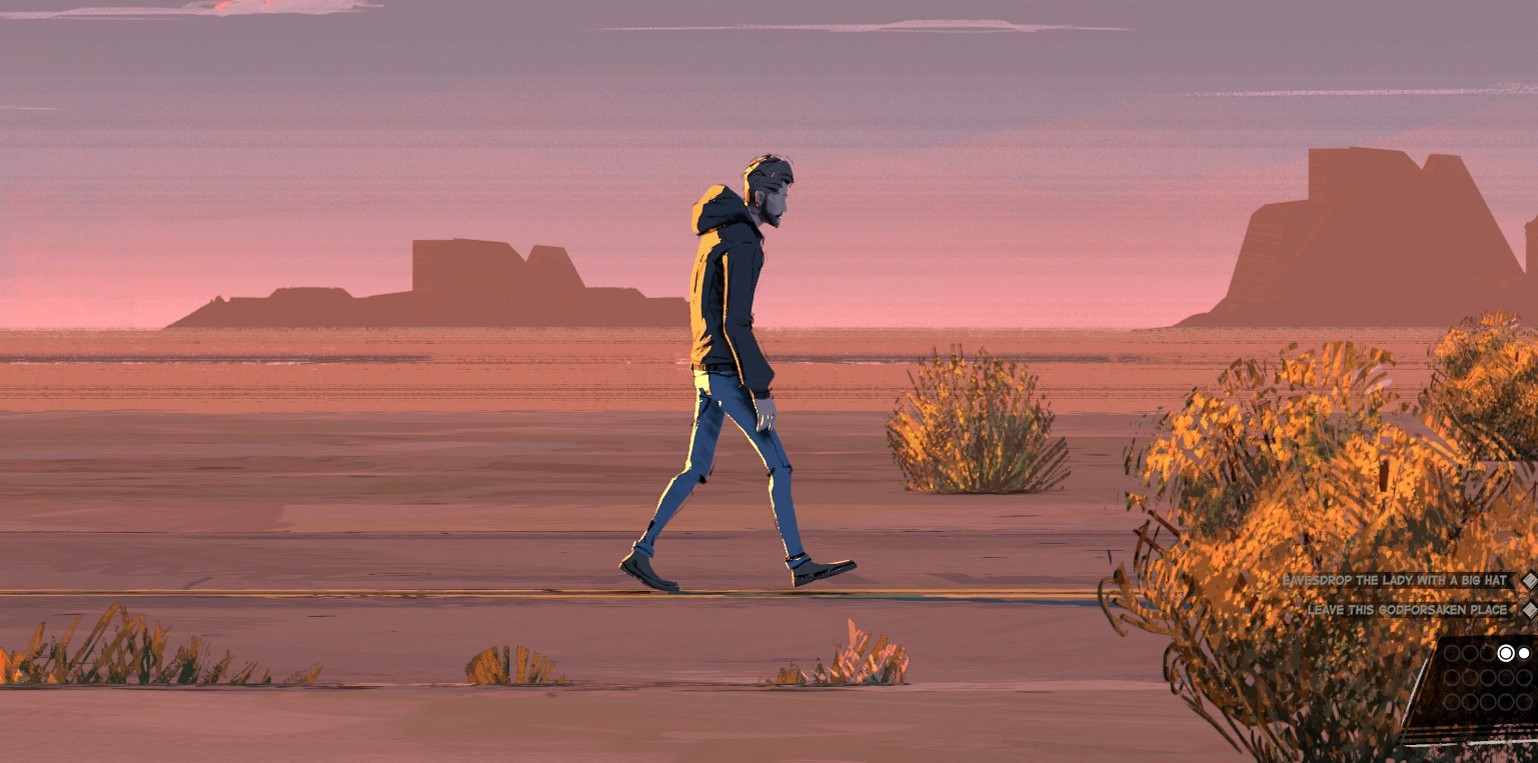Management sim sequel Jurassic World Evolution 3 offers more park customisation than ever for hardcore fans—but there's no dinosaur-driven chaos left to be found
Life doesn't find a way, but at least you can place 17 different designs of path.
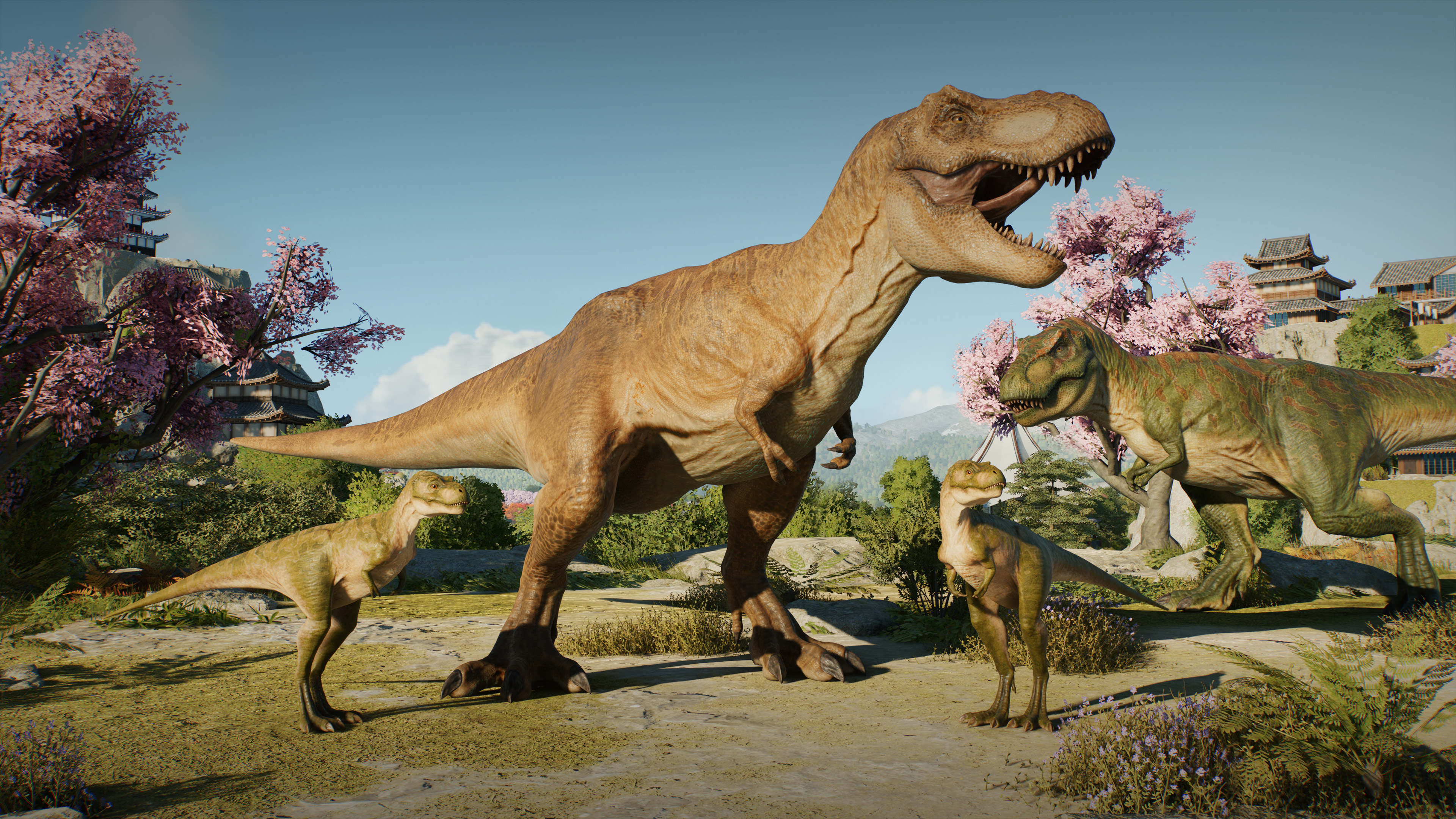
Jurassic Park is about chaos. Man comes to think he can control nature, even play God, and he is undone by his hubris. Dinosaurs run amok and destroy all he has built. Life finds a way.
Jurassic World Evolution 3 is not about that. 10 minutes into my roughly hour and a half playing the game at a recent event, I find myself agonising over which of 17 different possible designs of path I should lay down in front of my maintenance building. Each one has a fully customisable colour scheme. More than ever, this is a series about control.
In that sense, this sequel feels aimed squarely at existing fans. The core loop is familiar to the point of, frankly, staleness—build enclosures, put dinosaurs in them, add and remove things until the dinosaurs are happy, plonk supporting buildings around them, repeat. Instead of shaking up the formula, what this sequel adds is more tools for refining, beautifying, and perfecting your park to your exact preferences.
Buildings can be customised with a huge array of modular parts. The environment can be sculpted and shaped more elaborately than ever before. Almost everything can be recoloured, scaled, and rotated.
"We wanted to make it more flexible, more creative, and give players the chance to share their creations," says Andy Fletcher, game director on the project. "We had great experiences doing that with some of our other games, and we knew Jurassic fans would take to that if we did it right. So we really wanted to bring that level of granular creativity to the game."
Planet Coaster and Planet Zoo fans will already be familiar with the Frontier Workshop, a platform that allows players to share their creations. Here, you'll be able to upload and download everything from full park maps to grouped scenery layouts to individual buildings. For dedicated digital architects, it's a really exciting addition.
But the more I searched for a frisson of danger in the game, the more I discovered how far this feeling of absolute control extends. More than ever, Hammond's hubristic experiment feels entirely in hand, with new building types offering more ways to contain disasters and preserve the sanctity of your creations.
Keep up to date with the most important stories and the best deals, as picked by the PC Gamer team.
"This time what we've tried to do is give you more tools, so that if you do want a more well managed park, a more secure, kind of sedate experience if you like, we're giving you more tools to achieve that," says Fletcher. "So you've got these new maintenance posts that allow maintenance teams to basically buzz around and fix fences as soon as they're [broken]. We've got security cameras that allow your capture teams to automatically identify and capture a dinosaur that might be loose in the guest area. We want to offer up these options so players don't always have to feel like they have to attend emergencies all the time. You can kind of preempt it and make it all run like clockwork if you want to put the time in to do that."
Nest practice
The big development this time for the dinosaurs themselves is the addition of a more natural lifecycle. Male dinosaurs can now be introduced to your park, and you can encourage natural breeding, resulting in… adorable baby dinosaurs!
Gorgeous animation has always been a strong suit of the series, and these little guys are lovely to watch as they trot around their enclosures. You can even arrange petting zoo-style experiences, allowing visitors to interact with the more docile juvenile herbivores. The Jurassic World Evolution games can feel a little sterile at times, to me—baby dinosaurs add a welcome touch of warmth.
"I think there is a slight shift in tone in terms of being a little bit more about the conservation of these dinosaurs across the globe and encouraging breeding out in the wild," says Fletcher. "So it's a good balance of that sort of hard science and synthesis of before, and something a bit more naturalistic."
But though this system adds more life to your enclosures, it still all feels very contained. You decide exactly when and where dinosaurs breed, by controlling their happiness levels and manually placing their nests.
You can choose exactly who mates with who, customising family trees to pass down particular genetic traits from behavioural quirks like being nocturnal to colour and patterning. And if anything doesn't go exactly as you prefer, or you need to expand your gene pool, you're free to do things the, uh, new-fashioned way instead, synthesising dinosaurs from scratch in your lab.
The babies are cute but they are, ultimately, just another little set of numbers to tweak—they rate particularly well on the 'appeal' stat, of course, delighting visitors—rather than feeling like living, willful beings.
In the original movie, Hammond made all the dinosaurs female to try and avoid losing control of the population. There's no fear of that here. Dino mothers don't become any more dangerous or difficult to contain, nor do amorous males. Nature is fully controlled—and you can mould it to your liking. Life does not find a way.
Combined with the scientifically-minded and very earnest tone of the game—the (literally) biting corporate satire that pervades the movies is extremely thin on the ground here—for me all this perfect order makes for a somewhat dry experience. Eventually I give up on finding the excitement in a normally functioning park, and invite the chaos in directly—first introducing multiple apex predator species into the same enclosure, and then in desperation simply deleting gates to let the dinosaurs run free.
But what I'm looking for simply isn't there. The resulting war between snapping utahraptors and fierce yutyrannus has no real tension—every now and then a fight breaks out, always one-on-one like an honourable duel, and they bite at each other for a bit before one falls over and the game tells me to deal with the corpse.
When I let a hulking acrocanthosaurus loose on the grounds, visitors hardly seem bothered to get up from their chairs at the restaurant, and it doesn't even have the good grace to savage anyone. It simply wanders listlessly, waiting to be recaptured. Leaving the situation completely out of control for about 15 minutes results in no lasting damage, no bitemarks in my buildings, and as far as I can make out not a single death. Getting everything back to normal is a matter of a few clicks.
But of course that's how it goes. Jurassic World Evolution 3 is about supporting your grand design, not destroying it. Though I fear the dinosaurs themselves have become simply set dressing, the result is a really impressive tool for those who love to intricately piece together what they see in their mind on screen—or dive into a whole library of other people's amazing creations—without being overwhelmed by crises or stymied by more organic systems. This isn't shaping up to be a thrilling sequel, but it is a confident one, committing to its core audience more than ever.
I tell you what: John Hammond would love it.

Formerly the editor of PC Gamer magazine (and the dearly departed GamesMaster), Robin combines years of experience in games journalism with a lifelong love of PC gaming. First hypnotised by the light of the monitor as he muddled through Simon the Sorcerer on his uncle’s machine, he’s been a devotee ever since, devouring any RPG or strategy game to stumble into his path. Now he's channelling that devotion into filling this lovely website with features, news, reviews, and all of his hottest takes.
You must confirm your public display name before commenting
Please logout and then login again, you will then be prompted to enter your display name.
